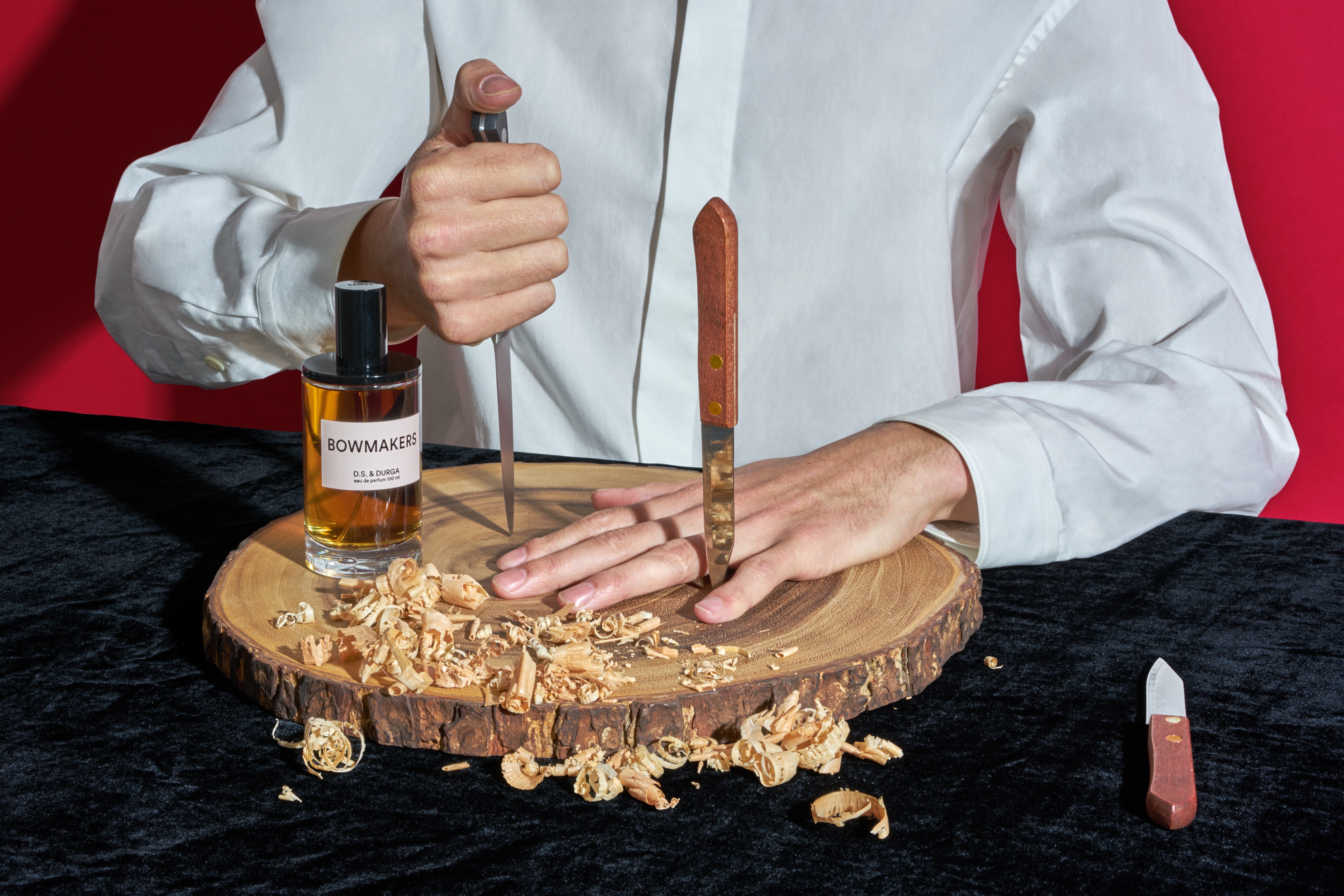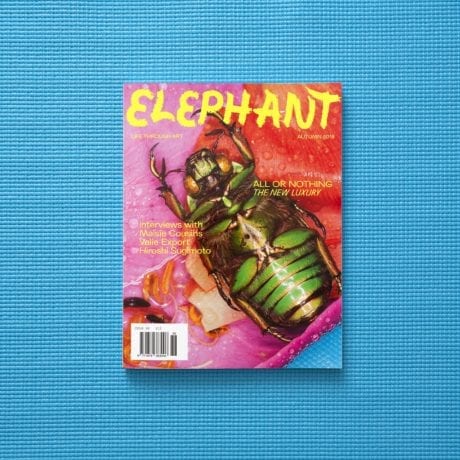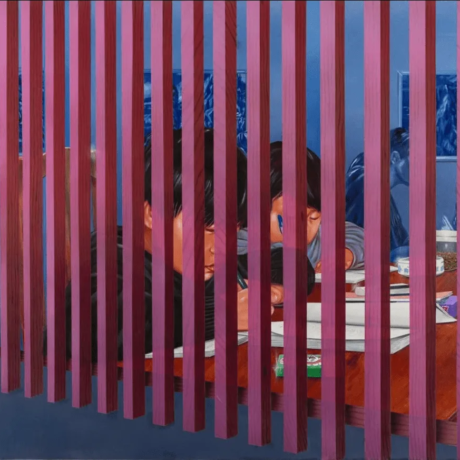
New York-based designers Leta Sobierajski and Wade Jeffree are partners in work and life. After meeting on an online dating site, they began experimenting with a series of absurd self-portraits, using nothing but their own bodies and a plethora of mundane and insane props. It quickly became evident that they clicked creatively, and thus began their self-titled design studio where they build carefully articulated surreal sets drenched in kaleidoscopic colours which are always underscored with a sense of fun. Their fastidious DIY attitude has led to projects spanning brand identities, music packaging, advertising and editorial, with a client list that includes Gucci, Comme des Garçons
, D.S & Durga and AIGA.
I hear you met on a dating website. How did your creative relationship grow from that point?
Leta Sobierajski: We met on OkCupid, and we were both looking for someone who was creatively inclined. It just so happens that we are both graphic designers. We decided very early on that we not only wanted to have this very intimate relationship but also progress it to be a creative collaboration. With that, we started a portrait series called Complements, which continued for about two years. We’d come back from work, set up some lights in the living room and just shoot.
“Perfume is also such a cult notion. People identify with one specific fragrance and can become really manic about it”
Wade Jeffree: It was early in our relationship and my place was, I guess you could call it a shithole, so we worked at Leta’s. We started off with ten images, but it gained steam in a way we never expected. We knew it was an important thing to try and work together, because our viewpoints and aesthetics were very different. We could have broken up after a month, but luckily it all worked out and that’s why we’re having this conversation!
How do you maintain a work-life balance when you’re constantly creating together?
WJ: It’s better now that we have a proper studio. We needed some separation from the apartment, so when we’re at home we can relax and when we come here it’s a creative free-for-all.
LS: Since we founded the studio the scale and scope of the work has also grown. It’s been an organic progression. We split the space in half, with one side designated for design, and at the back we build sets, shoot everything and make a mess. You don’t want to be wasteful, and you hope you can repurpose things, but it means the walls are closing in on us.

You seem to straddle everything from branding to sets to video, how do you define yourselves?
WJ: We are always trying to avoid calling ourselves “multidisciplinary”, people use that as a catch-all. We build all the sets, take the photos, do all the graphic design, branding and strategy, but I guess we’re just all-encompassing. Graphic design and art direction seems to fit best, we definitely don’t want to call ourselves photographers, because if real professionals saw how we worked they’d say, “Get the fuck out of here.”
It’s a pretty vague question, but is there anywhere specifically that you look for inspiration?
LS: We travel a lot, especially to see art. Last time we were in Tokyo we saw a show by Leandro Erlich at the Mori Art Museum, where you could walk under his swimming pool—it was phenomenal.
WJ: When you see art in different contexts—especially if you can’t read what’s on the walls—it’s like looking at everything from another point; of ideation or process. You start thinking differently. As much as this is the case in art, it’s also in the local bodega. You see a toilet plunger and you ask, “Why is that pink?” It can be as mundane and obscure as that, which is on the other side of big conceptual thinking.
“People have forgotten that making perfume is like alchemy. You’re using all these components to build a story”
You’ve done several projects with high-profile perfume companies. What do you try to convey with this work?
LS: D.S & Durga have been so fantastic to collaborate with because they are such incredible storytellers. They are a husband and wife duo, and they have these expansive stories about their childhood in New England and India.
WJ: Making the images as interesting as the stories is the whole challenge. There is always a nugget of an idea, where the fragrance started. Burning Barbershop stems from the scent of a bottle of aftershave salvaged from a fire in the 1920s, and Vio Volta evokes the aroma of a guitar at the end of a gig.

The perfume industry is so lucrative, because it’s an attainable product perpetuated by luxury brands, but you focus on recreating that visceral sense, which is a world away from the insane world of mainstream fragrance advertising.
WJ: People have forgotten that making perfume is like alchemy. You’re using all these components to build a story. They’re such an intimate, personal thing. Think about peak Tom Ford; you’re just putting a bottle in front of a vagina, and you have to ask “Ummm, what are you doing?”
LS: Yeah, what story does that tell beyond a two-dimensional idea of sex? Perfume is also such a cult notion. People identify with one specific fragrance and can become really manic about it. We like being able to portray the idea of this overwhelming presence, which transports you somewhere else.
WJ: We don’t just define ourselves by our haircuts or clothing. The scent you choose to wear alludes to the bigger story of who you are as a person. In a sense we are all packaging ourselves in different ways.
This feature originally appeared in issue 36
BUY ISSUE 36






